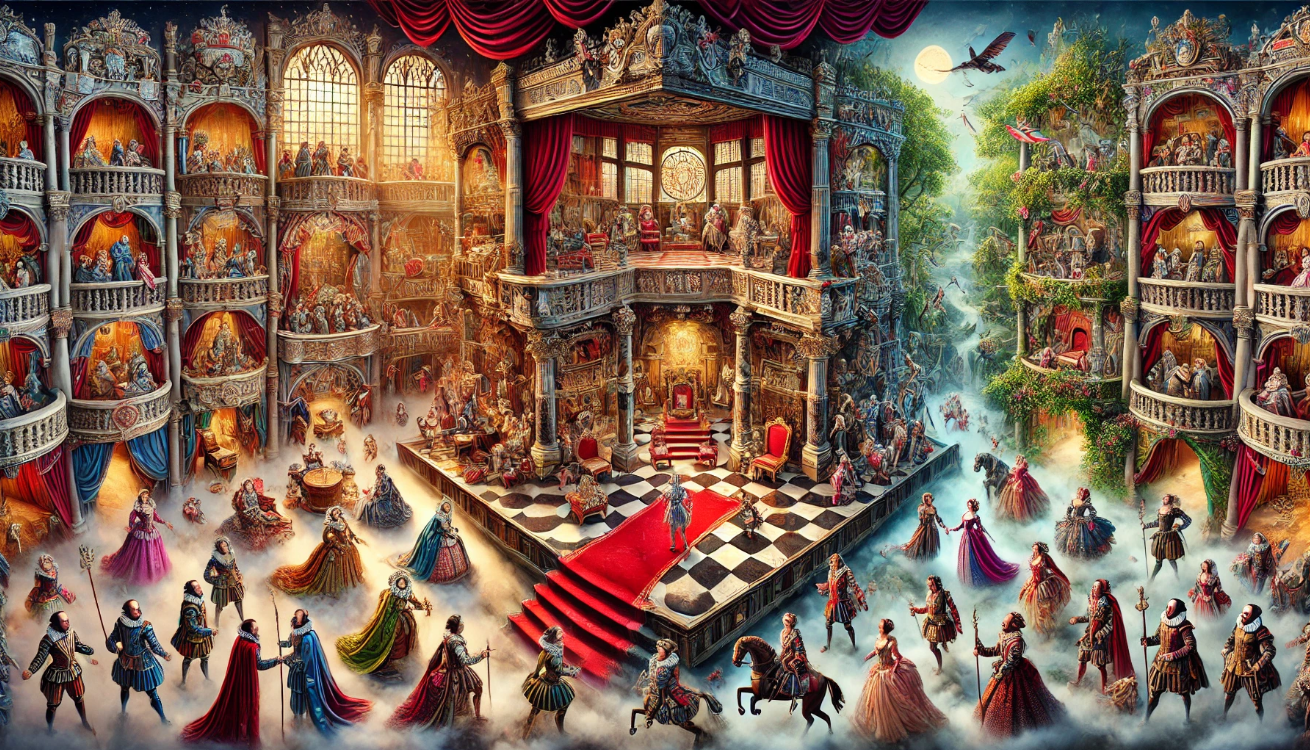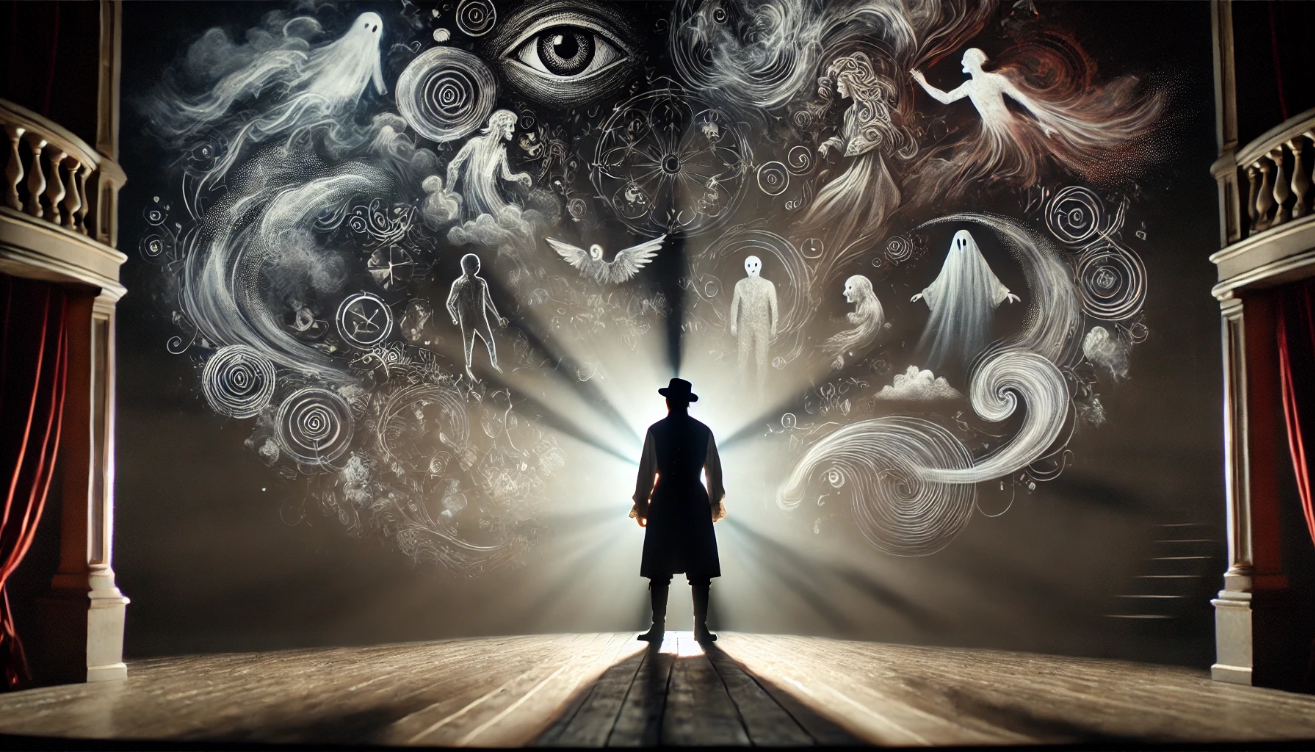 When we think about the stories that Shakespeare’s influence on narrative structure move us today — from novels to blockbuster films — we often overlook one of the greatest architects behind their structure: William Shakespeare. Shakespeare’s influence on narrative structure is so profound that many of the techniques we now take for granted, like deeply layered characters and intertwined plots, first found their full expression on his stage. Before Shakespeare, storytelling followed simpler, more predictable patterns. But through his mastery of drama, character, and pacing, he reshaped how narratives could unfold — making them richer, more dynamic, and more human. In this article, we’ll explore exactly how Shakespeare’s influence on narrative structure storytelling innovations continue to shape modern literature and what lessons writers and readers alike can draw from his timeless craft.
When we think about the stories that Shakespeare’s influence on narrative structure move us today — from novels to blockbuster films — we often overlook one of the greatest architects behind their structure: William Shakespeare. Shakespeare’s influence on narrative structure is so profound that many of the techniques we now take for granted, like deeply layered characters and intertwined plots, first found their full expression on his stage. Before Shakespeare, storytelling followed simpler, more predictable patterns. But through his mastery of drama, character, and pacing, he reshaped how narratives could unfold — making them richer, more dynamic, and more human. In this article, we’ll explore exactly how Shakespeare’s influence on narrative structure storytelling innovations continue to shape modern literature and what lessons writers and readers alike can draw from his timeless craft.
Shakespeare’s Storytelling Before Shakespeare: The Traditional Narrative Model

Before Shakespeare’s influence on narrative structure revolutionized storytelling, narratives followed a strict, predictable pattern. Most plays and stories were heavily influenced by classical traditions, especially those from ancient Greece and Rome. Writers typically obeyed the “Three Unities”: unity of time, place, and action. This meant that stories Shakespeare’s influence on narrative structure were set in one location, unfolded over a short period (usually 24 hours), and focused on a single plot without major subplots. Shakespeare’s influence on narrative structure
Characters were often flat and served the story’s moral lesson rather than being complex individuals. Heroes were clearly good; villains were clearly bad. Emotional depth, personal struggles, and inner conflicts were rarely explored.
In short, storytelling before Shakespeare was straightforward, moralistic, and heavily structured — leaving little room for the emotional and psychological richness we now expect in literature.
Understanding this traditional model is key to appreciating just how dramatically Shakespeare’s influence on narrative structure changed the art of storytelling forever.
Breaking the Mold: Shakespeare’s Key Innovations in Narrative Structure

Shakespeare didn’t just follow the old rules — he transformed them. One of his biggest contributions was moving away from the rigid structure of the “Three Unities.” His plays stretched across multiple locations and time periods, allowing stories to feel more real and expansive.
Another major innovation was the use of multiple plotlines. In plays like King Lear, Shakespeare masterfully wove together a main plot and one or more subplots, creating deeper, richer narratives that reflected real life’s complexity.
He also made character-driven storytelling central. Instead of relying only on external events, Shakespeare focused on inner struggles, personal ambition, and moral conflict. Characters like Hamlet and Macbeth were not just acting — they were thinking, doubting, and feeling.
Through these changes, Shakespeare’s influence on narrative structure brought stories to life in a way that had never been seen before. He opened the door for modern writers to explore complex human emotions and multi-layered story worlds.
The Role of Soliloquies and Asides in Reshaping Story Arcs

One of Shakespeare’s most powerful tools for reshaping narrative structure was his use of soliloquies and asides. These techniques allowed characters to speak directly to the audience, revealing their private thoughts, fears, and desires.
Before Shakespeare, audiences mainly saw only what characters said and did in public. By introducing soliloquies, Shakespeare gave viewers a window into the characters’ inner worlds. This made stories feel deeper and more personal. We could now see a character’s struggles long before they made major decisions, creating richer emotional journeys.
Asides worked in a similar way but were usually shorter. They allowed quick glimpses into a character’s intentions without other characters hearing.
Through these innovations, Shakespeare’s influence on narrative structure made storytelling more dynamic and layered. Readers and audiences were no longer just watching actions — they were invited inside the mind, shaping a new kind of connection to the story.
Shakespeare’s Use of Dramatic Structure: Acts, Climaxes, and Resolutions

Shakespeare mastered the five-act structure, shaping the way modern stories are built today. Each act had a clear purpose: setting up the story, building tension, reaching a major turning point, falling action, and final resolution.
He carefully placed the climax — the moment of greatest tension — right in the middle (usually Act 3). This gave the story a strong center, keeping audiences deeply engaged. After the climax, he allowed the consequences to unfold naturally, leading toward a thoughtful and often powerful resolution.
Instead of ending stories with a simple win or loss, Shakespeare’s resolutions often left room for reflection, showing how choices shaped the characters’ futures.
Through this careful balance of structure and emotion, Shakespeare’s influence on narrative structure gave modern writers a flexible but powerful storytelling model — one that still shapes novels, films, and plays today.
Shakespeare’s Influence on Modern Narrative Techniques

Many of the storytelling methods we see today have roots in Shakespeare’s innovations. His use of deep character development, emotional conflict, and layered plots set the standard for modern narratives across books, movies, and TV shows.
Writers now regularly explore internal struggles, complex moral choices, and shifting loyalties — all techniques that Shakespeare’s influence on narrative structure helped popularize. Non-linear storytelling, multiple viewpoints, and rich subplots can all trace their evolution back to his plays.
Even today, stories that feel more “real” and emotionally charged often borrow Shakespeare’s approach of blending personal journeys with larger dramatic arcs. His techniques have become essential tools for writers seeking to create meaningful, lasting impact with their audiences.
Practical Insights for Readers and Writers Today

Shakespeare’s storytelling innovations offer valuable lessons for today’s writers and readers alike. Here are some practical insights:
Embrace Complex Characters: Shakespeare’s characters were not one-dimensional; they were multi-layered with flaws, desires, and contradictions. Writers today can create more relatable and compelling characters by exploring internal conflicts and motivations.
Play with Structure: Don’t be afraid to break traditional storytelling molds. Use subplots, flashbacks, or multiple perspectives to add depth and keep readers engaged, just as Shakespeare did with his intertwined storylines.
Use Dialogue as a Window to the Soul: Soliloquies and asides allow readers to hear a character’s true thoughts. Writers can use dialogue, internal monologues, and even unreliable narration to reveal their characters’ innermost feelings and thoughts.
Focus on Emotional Stakes: Like Shakespeare’s plays, modern stories thrive when they raise the emotional stakes. Whether it’s love, betrayal, or personal growth, ensuring your story’s emotional impact will resonate with audiences.
By applying these principles, writers can create stories that have the depth, emotional engagement, and timeless appeal that Shakespeare’s work continues to inspire. Readers, too, can better appreciate the complexities behind modern storytelling.
Shakespeare’s influence on narrative structure is undeniable. His groundbreaking use of character complexity, non-linear storytelling, and emotional depth has shaped the way we tell stories today. From weaving intricate plots to focusing on the internal struggles of characters, his innovations have set the standard for modern literature, theater, and film.
For writers, Shakespeare’s techniques offer a rich toolkit to craft compelling narratives that resonate with audiences. For readers, understanding these innovations enhances the appreciation of the stories we encounter, revealing the layers and depth behind every plot twist and character arc.
Ultimately, Shakespeare’s storytelling techniques continue to inspire, challenge, and shape the narratives of today. By embracing his insights, we can continue to push the boundaries of what stories can achieve, ensuring that his legacy lives on for generations to come.

